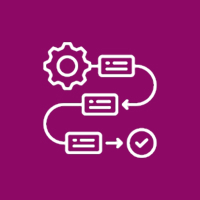Transitioning from one database system to another can be a complicated endeavor, particularly when the database includes mission-critical data and applications. MySQL is recognized for its performance, scalability, and open-source flexibility, and is adopted by many businesses looking to modernize their database systems. A successful migration to MySQL will boost reliability, lower costs, and improve application performance.
1. Why Migrate to MySQL?
MySQL continues to be a significant option for startups and enterprises alike, with several winning features. The fact that MySQL is an open-source platform often translates to lower licensing costs, especially for companies that need to pass those costs along to customers. MySQL continues to have a strong and active community with an extensive ecosystem of products and services that complement the process of deploying and maintaining the database platform. MySQL is also widely compatible with the development platforms that many organizations rely upon for their applications, so migrating to MySQL reduces friction with many software environments.
Benefits:
- Cost and open source is attractive
- High availability and performance
- Strong community and vendor support
- Robust security and reliability
- Cross-platform compatibility
2. Preparing for Migration
Proper planning and preparation are vital for successful database migration. Prior to beginning the process of migrating, it is helpful to analyze your existing database schema, data size, and dependencies. For example, identifying features or data types that may not directly port over to MySQL will prevent future issues with compatibility.
Best Practices:
- Conduct a complete audit of the existing database to understand its schema and relationships.
- Define specific goals related to the purpose of migration, such as performance, cost, or scale.
- Build a plan for timeline and resource allocations in the migration process.
- Always back up all data before the start the migration process.
3. Schema and Data Migration
Different databases may implement different data types, functions, and constraints. When migrating, you will need to carefully convert these schemas in order to preserve data integrity. Tools like MySQL Workbench or third-party tools can take care of some of this conversion, while marking potential conflicts.
Tips for a Smooth Migration:
- Map data types for the source database and their “MySQL” equivalents.
- Before the migration of the full database, verify schema compatibility using a smaller amount of data as a test.
- After the migration is complete, verify foreign keys, indexes, and constraints.
4. Testing and Validation
Once the data has been successfully migrated, your next step is to ensure that everything works correctly with full testing. Make sure that the data has been migrated, and it is complete and correct. Perform testing on how things are all working – make sure the queries, stored procedures and triggers work how they did before in MySQL.
5. Post-migration tuning
Once your migration is complete, tuning the MySQL databases environment will help you achieve optimal performance. This can consists of many activities, including indexing, query tuning, and tuning MySQL’s performance options to your workload.
Recommendations to tune:
- Use indexing with care to improve queries.
- Enable caching for accessing data many times.
- Monitor the database performance and periodically tune the queries.
- Create regularly scheduled backups and replication for safety of the data.
6. Common challenges and obstacles to watch for during migration issues
Even with full and complete planning and discovery, there may be problems or challenges during and after the migration. Several of the more common types of issues include incompatible data types, broken stored procedures, and performance throttling after migration. Clues to address these early can save time and downtime.
How to address challenges:
- Use migration tools that offer compatibility reporting.
- Plan on incremental migrations as opposed to a cut over.
- Investigate and consult DBA’s during schema transformation that are involved and complex.
Conclusion
When done with planning and strategic planning, migrating data from other Databases to MySQL can improve the way your organization manages data. MySQL has features that are flexible, cost effective and scalable for organizations to manage growing data volume and compute cycles. By planning successfully and testing and tuning the process after migration you can have a positive experience and enable MySQL to its fullest potential in real world applications and workloads.
Contact Us Today













 Database Development
Database Development












































